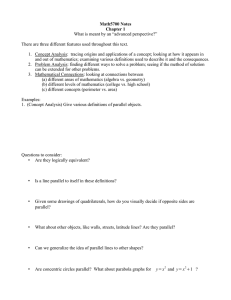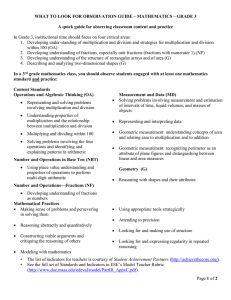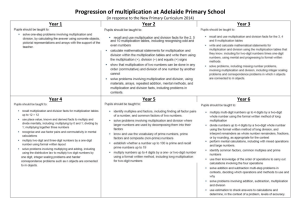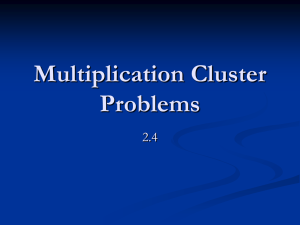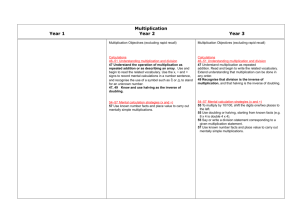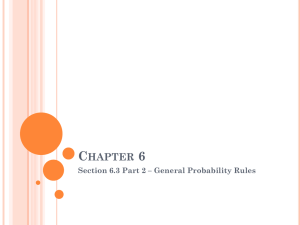Benchmarks:
advertisement
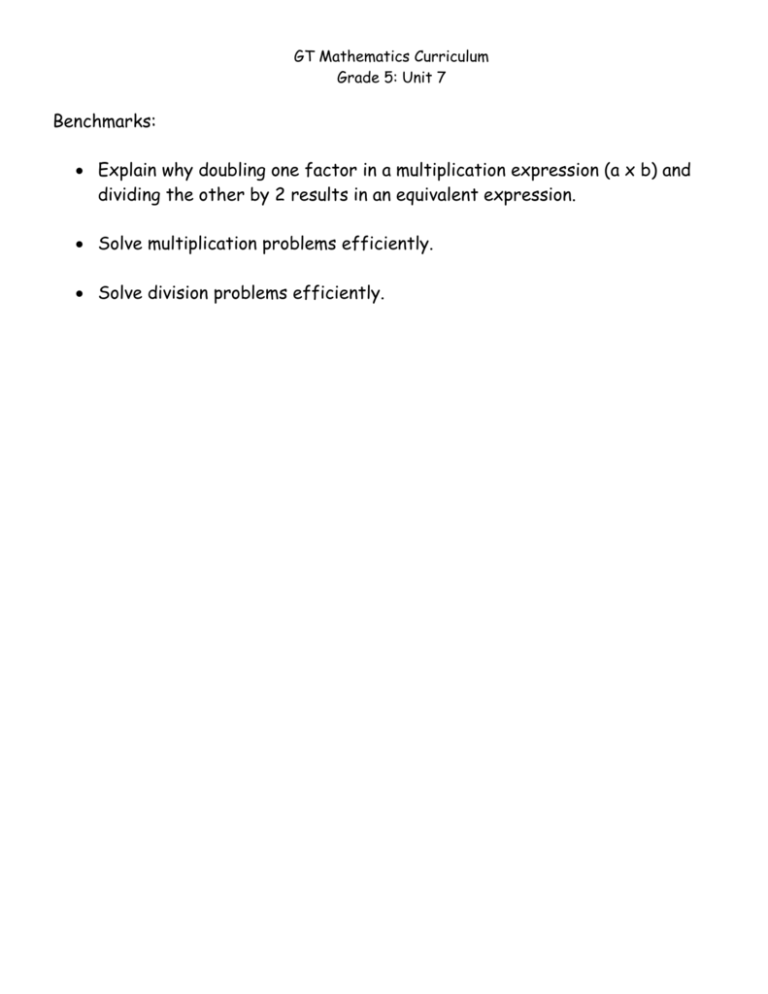
GT Mathematics Curriculum Grade 5: Unit 7 Benchmarks: Explain why doubling one factor in a multiplication expression (a x b) and dividing the other by 2 results in an equivalent expression. Solve multiplication problems efficiently. Solve division problems efficiently. GT Mathematics Curriculum Grade 5: Unit 7 Name: __________________ Date: ________________ Pre-Assessment 1. Use each digit card once to fill in the spaces below so that your answer is between 30,000 and 40,000. 6 9 3 5 5 X Find the exact answer to the problem above. Show how you solved it. GT Mathematics Curriculum Grade 5: Unit 7 2. Solve this problem. Use clear and concise notation in your solution. 1,564 ÷ 36 = 3. Solve 253 x 46 two different ways. GT Mathematics Curriculum Grade 5: Unit 7 Write 3 story problems for the expression below: 2 x 9 = 6 x ___ Write three more expressions that are equivalent to 2 x 9. When doubling and halving numbers, some resulting numbers include decimals or fractions. Explore whether the conjectures still work when the resulting numbers include fractions or decimals. Use story contexts or representations to show why the conjectures about multiplying and dividing by the same number holds true or not. Write a letter to a fourth grader explaining doubling and halving and tripling and thirding. Be sure to explain the process clearly using words, pictures, and numbers. Can you multiply and divide the factors by any number to create equivalent expressions? Try several different numbers. Create a Power Point presentation to share your findings with the class. Create a multiplication strategy book for next year’s fifth graders. Generate 5 different multiplication problems (no more than 3 digits in each factor). Solve the problems you create using a different strategy for each problem. Can you solve 243 x 38 mentally? Explain the steps you took in your head to solve this problem mentally. Try solving other problems mentally. Did you use the same strategy? Create a poster showing your mental strategy. Does 1,200 ÷ 26 = 600 ÷ 13? Does 860 ÷ 64 = 215 ÷ 16? Show your thinking. Create your own equivalent equations. Write the rules you used to create your equivalent equations. Will your rules work with any numbers? Create anchor charts for your classroom. Show at least 5 multiplication strategies and at least 5 division strategies. Complete an extended multiplication chart. Write about the patterns you see. *see attached GT Mathematics Curriculum Grade 5: Unit 7 Extended Multiplication Table 1 X 21 22 23 24 25 26 27 28 29 30 31 32 21 22 23 24 25 26 27 28 29 30 31 32

